Synthetic Emerald
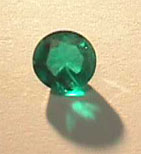
General Information
What color is it?: A very fine green color that will duplicate the finest colors of natural emerald.
What is the story behind this gemstone?: The first successful synthesis of chromium colored beryl was done by a gentleman named Carroll C. Chatham in San Francisco before World War II. There has been an ongoing battle between the Chathams and the gemstones industry since then regarding what to call these stones. I can tell you from first hand experience that the term synthetic emerald is a no-no around the Chatham offices. And instead the term created emerald is the name of the day. A term which I have to endorse, if for no other reason than the Chatham family has always maintained a proper view of their product to consumers, and Chatham Created Gems continues to be a world leader in the industry in regards to laboratory creation of gemstones.
Today, it is important to note that there are a variety of created emeralds out on the market grown by both the flux-fusion and hydrothermal methods. With names like Chatham, Gilson, Lennix, Inamori/Seiko, and a variety of Russian stones. Each of these will offer their own characteristic inclusions for identification, and all identifications should be done by an experience gemologist who works with a lot of emeralds, both natural and created.
Source:
Chemical: BeAlSiO beryllium aluminum silicate…just like natural emerald
Formation: Either by hydrothermal or flux-fusion lab processes
Crystal System: Hexagonal
Unusual Properties: Created emeralds will have characteristic inclusions…and the things just look too darned good. A nice Chatham will look like the top quality natural emerald to the untrained eye…which I suppose was the purpose in the first place. But most jewelers use the old “it just looks too good” test as their first defense in looking at possible created emeralds.
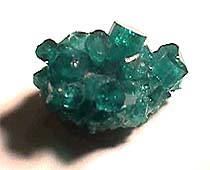
Gemological Information and Identification
A crystal group of Chatham Created Emeralds. Notice the same hexagonal crystal growth as natural
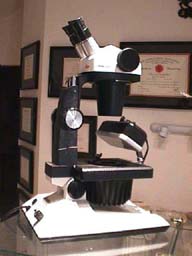
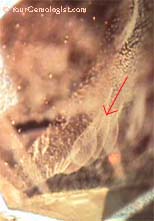
Primary Test: Magnification
Inclusions to a trained gemologist will be the best determining factor of created emerald identification. As shown above, one classic created emerald inclusion will be veil-like inclusions where the veil will fold back into itself. A good indication of created emerald. There are many types of inclusions in both natural and synthetic which require a great deal of study to master. However, three phase inclusions of gas, salt crystal and salt water will be diagnostic for natural Colombian emeralds. For additional information on emerald identification I urge everyone to get a copy of Photoatlas of Inclusions in Gemstones by Gubelin/Koivula. No proper gemological lab should be without this important reference resource.
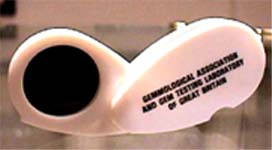
Secondary Test: Chelsea Filter

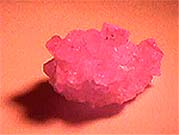
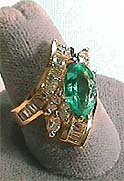
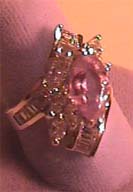
Although the GIA does not teach the importance of the Chelsea Filter, and its original purpose was to separate green vanadium based beryl from chromium based emerald, the fact is that it is also important in identifying natural from created emeralds. Mainly because the created stones have so much chromium in them that their reaction is far greater in the Chelsea Filter than the naturals. As shown above the Chatham Created Emerald gives off a bright red reaction which is far greater than the reaction of the natural emerald in the ring above right. (Please note: getting these colors to show properly on the internet is very difficult. I urge everyone to do some research on their own to best know the proper reaction for yourself). However, this is only an indication and should only be used by someone with a lot of experience in both natural and created emeralds.
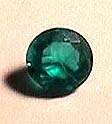
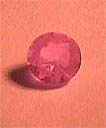
Another view of a created emerald through the Chelsea Filter
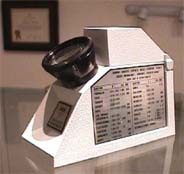
Secondary Test: Refractometer
For an experienced gemologist the refractometer can be a very good tool for separation. Both the flux-fusion and hydrothermal created stones will have refractive index readings below natural. The flux emeralds will be in the 1.561 – 1.564 range with the hydrothermal in the 1.568 – 1.573 range. Natural emerald will read in the 1.577 o 1.583 with variations in readings due to origin of emerald. However, if you have a good sodiumD light source on your refractometer, and are well experienced in getting readings from the various crystalline directions of gemstones, you should be able to get a very good determination with a refractometer.

